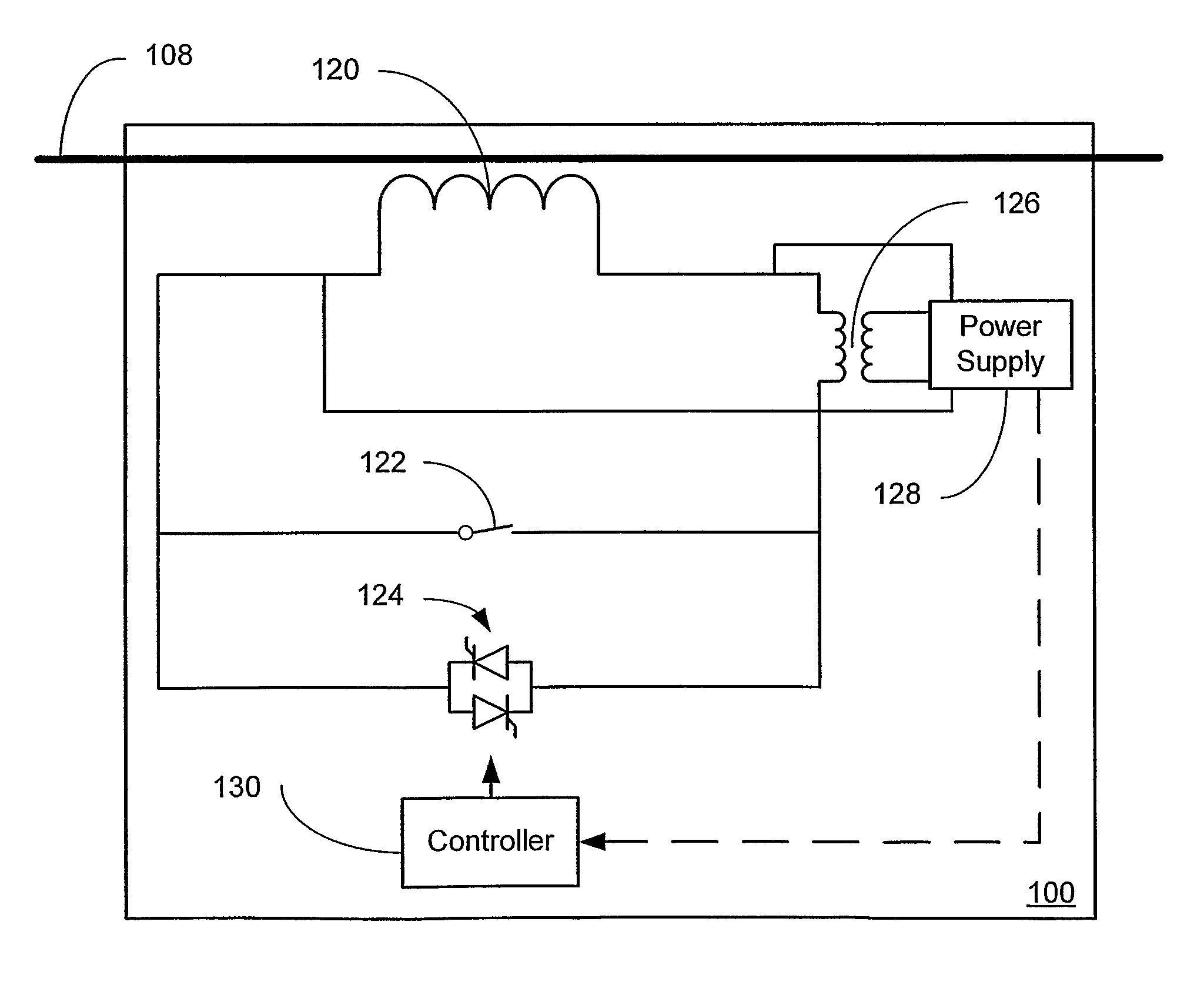Systems and methods for distributed series compensation of power lines using passive devices
a technology of distributed series and power lines, applied in emergency protective arrangements, electrical equipment, emergency circuit arrangements, etc., can solve problems such as active power flow control, grid utilization terms, and transmission constraints and bottlenecks
- Summary
- Abstract
- Description
- Claims
- Application Information
AI Technical Summary
Benefits of technology
Problems solved by technology
Method used
Image
Examples
Embodiment Construction
[0025]FIG. 1 illustrates an embodiment of a distributed series reactor (DSR), denoted by reference numeral 100, for line overload control by insertion of a distributed series impedance into a conductor 108 of an electric power system 102. The electric power system 102 has an electric power source 104 and a load 106 connected by at least one, and usually multiple, conductors 108. Of course, the electric power system 102 may have multiple power sources 104 and multiple loads 106. The DSR 100 is attached to a transmission line conductor 108 preferably, but not necessarily, near to an insulator 110. As discussed further below, the DSR 100 modules are formed to attach to the conductor 108 without requiring a break or any other physical modification to the power line. Further, the DSR 100 operates without the necessity of information regarding currents flowing in the rest of the network, without a central controller, and without a communication infrastructure that is normally required for...
PUM
 Login to View More
Login to View More Abstract
Description
Claims
Application Information
 Login to View More
Login to View More - R&D
- Intellectual Property
- Life Sciences
- Materials
- Tech Scout
- Unparalleled Data Quality
- Higher Quality Content
- 60% Fewer Hallucinations
Browse by: Latest US Patents, China's latest patents, Technical Efficacy Thesaurus, Application Domain, Technology Topic, Popular Technical Reports.
© 2025 PatSnap. All rights reserved.Legal|Privacy policy|Modern Slavery Act Transparency Statement|Sitemap|About US| Contact US: help@patsnap.com



